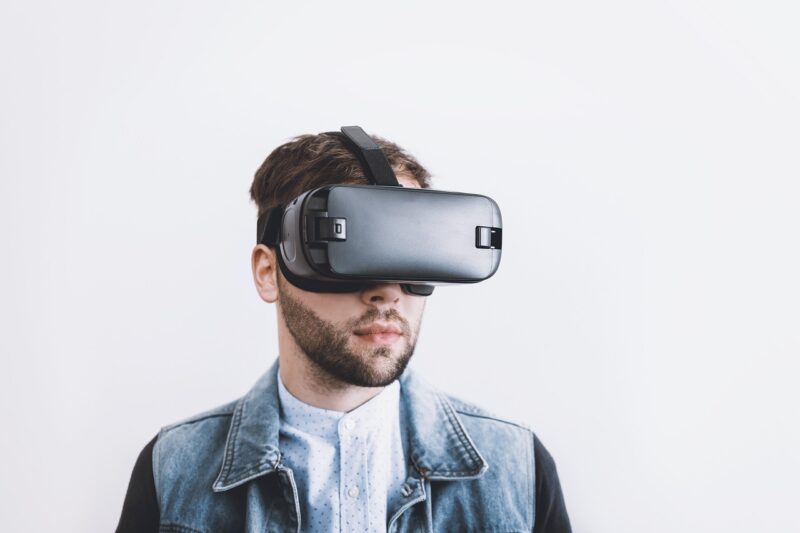Building 3D Models for Virtual Reality: How to Create an Immersive Experience
November 13, 2024

Virtual reality (VR) has taken the world by storm, allowing users to immerse themselves in completely constructed digital environments. As VR technology continues to improve, the demand for high-quality 3D models skyrockets. Whether you are creating VR games, simulations, or educational experiences, understanding how to build effective 3D models is essential.
In this article, we’ll explore the process of building 3D models for virtual reality and discuss best practices, tools, and techniques to create captivating immersive experiences.
1. Understanding the Basics of 3D Modeling
Before diving into the specifics of creating 3D models for VR, it’s crucial to understand the fundamentals of 3D modeling. 3D modeling is the process of generating a three-dimensional representation of a physical object using specialized software. These models are used in various applications, including VR, gaming, film production, and more.
Commonly used 3D modeling techniques include:
- Box Modeling: Starting with basic shapes (like cubes or spheres) and refining them to create more complex models.
- Polygon Modeling: Building models out of polygons, which are placed together to form a mesh. This technique allows for high detail and accuracy.
- Sculpting: Using digital sculpting tools to create organic shapes that can be more intuitive, similar to working with clay.
Each method has its merits depending on the type of model you want to create and the desired level of detail or stylistic choice.
2. Required Tools for 3D Modeling
To create stunning 3D models for VR, you will need specific tools and software capable of handling the requirements of VR development. Here are some popular options used in the industry:
- Blender: An open-source 3D modeling software that offers powerful modeling, animation, and rendering capabilities. It’s free and has a robust community for support.
- Autodesk Maya: A professional modeling software widely used in the gaming industry, featuring advanced rigging, animation, and simulation tools.
- 3ds Max: Another Autodesk product that specializes in 3D modeling and animation, often used for architectural visualization and game design.
- ZBrush: A digital sculpting tool that integrates 3D/2.5D modeling, texturing, and painting, ideal for creating highly detailed organic models.
Choosing the right tool depends largely on your specific needs and experience level. Beginners might prefer Blender due to its comprehensive features and no cost, while experienced users might opt for the advanced capabilities of Maya or ZBrush.
3. Best Practices for 3D Modeling for VR
Creating 3D models specifically for VR requires extra attention to details that enhance the immersive experience. Here are some best practices:
- Optimize Your Models: Ensure your models are optimized to maintain performance during VR experiences. High-polygon models can slow down rendering, leading to poor user experiences. Aim for a lower polygon count where possible, focusing on maintaining visual quality while enhancing performance.
- Use Real-World Scale: Design your models to real-world scale, meaning that objects should represent their actual size. This improves user interaction and makes the experience more believable. Keep in mind that VR users will move around and interact with these objects, so correct scaling is essential for immersion.
- Apply Textures Thoughtfully: Texturing adds life to your models. Use high-quality textures that complement your models without overwhelming them. Consider implementing techniques like UV mapping, which allows you to apply a 2D image onto your 3D model efficiently.
- Test Regularly in VR: Regular testing is critical. Use VR testing tools to see how your models appear in an actual VR setting. Adjust their design based on user feedback, ensuring that the final result is engaging and functional.
By following these best practices, you’ll ensure your 3D models not only look great but also function effectively in virtual reality environments.
4. Step-by-Step Workflow for Creating 3D Models for VR
Creating a 3D model involves several steps from concept to execution. Here’s a simplified workflow to help guide your creation process:
- Conceptualization: Start with sketches or ideas. Visualize what you want to create and make notes on design aspects, size, colors, and textures.
- Create the Base Model: Using your selected software, start by blocking the basic shape of your model. Refine the structure as you develop details.
- Refinement and Detailing: Once the base model is in place, refine details and start adding intricate features that enhance realism.
- UV Mapping and Texturing: Unwrap your model and create UV maps to ensure proper application of textures. Choose your textures carefully to complement the model’s appearance.
- Rigging and Animation (if necessary): If your model requires movement, consider rigging and animating it. This adds another level of interactivity and realism.
- Export for VR: Finally, export your model to the format required by your VR development platform (like Unity or Unreal Engine). Test it in the VR environment to ensure everything works correctly.
Following this workflow will help streamline the modeling process, reduce errors, and provide you with a solid foundation to build from.
5. Conclusion: The Future of 3D Modeling in VR
As virtual reality technology continues to advance, the demand for immersive and high-quality 3D models will only grow. Building compelling 3D models is a creative and technical challenge but can lead to remarkable experiences for users.
By grasping the principles of 3D modeling, understanding the tools needed, and following best practices, you will be well-equipped to create models that transport users into fantastic worlds, vastly enriching the VR engagement. Start your journey into 3D modeling for virtual reality today and unleash your creativity to shape the future of immersive experiences!








